When we think about the great composers, it’s easy to picture them in a kind of vacuum of genius.
However, the great composers were human, just like the rest of us, and they lived and worked surrounded by other people.
Many composers had fascinating women in their lives who inspired them or even made their careers possible.
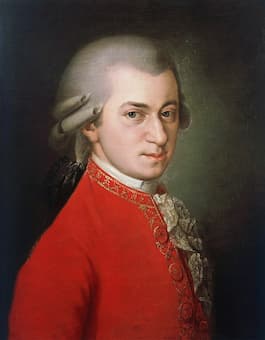
Wolfgang Amadeus Mozart
Today, we’re looking at some of the women in Wolfgang Amadeus Mozart’s life:
Anna Maria Pertyl Mozart
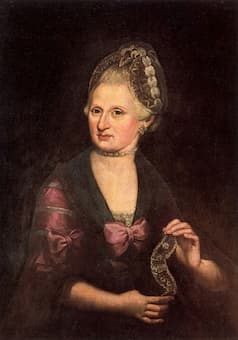
Anna Maria Mozart
Anna Maria Pertyl was born on Christmas Day 1720 in the village of St. Gilgen in present-day Austria, about thirty miles away from Salzburg.
Her father was a superintendent and talented amateur musician, and her mother was the daughter of a Salzburg court musician.
Unfortunately, her father died when she was only three years old, plunging his wife and two daughters into poverty. After his death, the little family moved to Salzburg and subsisted on charity.
Anna Maria was sickly and almost didn’t survive childhood. (Tragically, her older sister died at the age of nine.)
In 1747, the year she turned twenty-seven, she married Leopold Mozart, a brilliant musician who worked in the court of the Prince-Archbishop of Salzburg.
Between 1748 and 1756, she and Leopold had seven children, but only two survived infancy: a daughter nicknamed Nannerl and a son named Wolfgang Amadeus.
She almost died giving birth to Wolfgang: the placenta was not expelled, and it had to be removed manually, leaving her extremely weak. He’d be her final child.
Both of their surviving children turned into extraordinary child prodigies, and Leopold decided to bring them on the road. As a result, they toured for years.
Leopold was infamously demanding, and both Nannerl and Wolfgang went to their mother for comfort when their father’s rigidity and intense perfectionism got to be too much.
Between 1762 and 1768, she went on the road touring with her family. By 1769, however, the eighteen-year-old Nannerl had aged out of being a child prodigy. To the disappointment of the women, Leopold opted to bring just Wolfgang to Italy, leaving mother and daughter behind in provincial Salzburg.
In 1777, Leopold sent her on a tour with Wolfgang, now in his early twenties, while Leopold kept working in Salzburg. Mother and son visited Augsburg, Mannheim, and finally, Paris, where she suddenly fell ill, complaining of a fever, headache, sore throat, and exhaustion. Soon after, she died suddenly.
Mozart panicked and wrote a letter to his father, acknowledging only that she was ill. It took him a full week to tell the truth. His father blamed him for her death.
Leopold Mozart – Toy Symphony
Maria Anna Mozart (“Nannerl”)

Maria Anna Mozart (ca. 1785)
Mozart’s older sister Maria Anna, nicknamed Nannerl by her family, was born in July of 1751. Her brother Wolfgang arrived five years later.
When she was seven, her father began teaching her the harpsichord. Wolfgang proved to be very interested in her lessons, and soon, he started taking lessons of his own.
In 1762, the family embarked on what became years of touring. Nannerl performed with Wolfgang before Maximilian III Joseph, Elector of Bavaria, in Munich; Empress Maria Theresa in Vienna; Princess Anna Amalia of Prussia in Aachen; the French royal family at Versailles; King George III in London; and other members of European royalty.
In 1769, when Wolfgang and Leopold went to Italy, the women were left behind. Nannerl was too old to be exhibited as a child prodigy, and she was expected to look for a husband to support her. Instead, in 1772 she began teaching keyboard, which she continued to do throughout her life.
She did marry a twice-widowed magistrate in 1784 when she was thirty-three. They moved to the town of St. Gilgen, the village where her mother had been born. There, she raised her stepchildren and had three children of her own.
In 1785, her first child – a son named Leopold – was sent to live in Salzburg with her father to be raised by him. It is not understood why. Little Leopold stayed with his namesake until the older man died in 1787.
She drifted apart from her brother Wolfgang, and the two eventually stopped writing. Their children never met each other.
After her husband died in 1801, she returned to Salzburg and gave piano lessons and performed privately.
She lost her sight in 1825 and ended life sick and lonely but very wealthy. She died in 1829.
Maria Anna Mozart: Menuet in C Major (Emanuele Frenzilli)
Aloysia Weber Lange
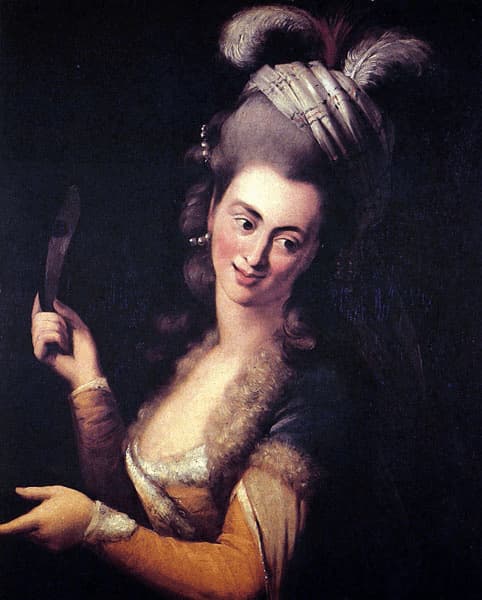
Aloysia Weber as Zémire in André Grétry’s opera Zémire et Azor, painting by Johann Baptist von Lampi the Elder
© Wikipedia
Aloysia was born to a musical family in the town of Zell im Wiesental in present-day Germany in 1760.
When she was a toddler, the family moved to Mannheim, and she trained there as a singer. One of her teachers was none other than Wolfgang Amadeus Mozart.
He fell in love with her and thought about proposing to her, but ultimately, nothing came of their romantic relationship.
In 1778, she moved to Munich and made her operatic debut; then, in 1779, she and her family relocated to Vienna. For a while, Mozart roomed with the family, but when he fell in love with Aloysia’s sister Constanze, he left. He and Constanze married in 1782.
Mozart wrote eight arias specifically for Aloysia, and she sang in many productions of his work in the 1780s and 1790s.
She got married in 1780 to an actor and painter named Joseph Lange. The marriage lasted for a little over a decade.
She ended her life in Salzburg, living with her sisters Sophie and Constanze, and died in the summer of 1839.
Mozart: K. 418, Vorrei spiegarvi, oh Dio
Constanze Weber Mozart
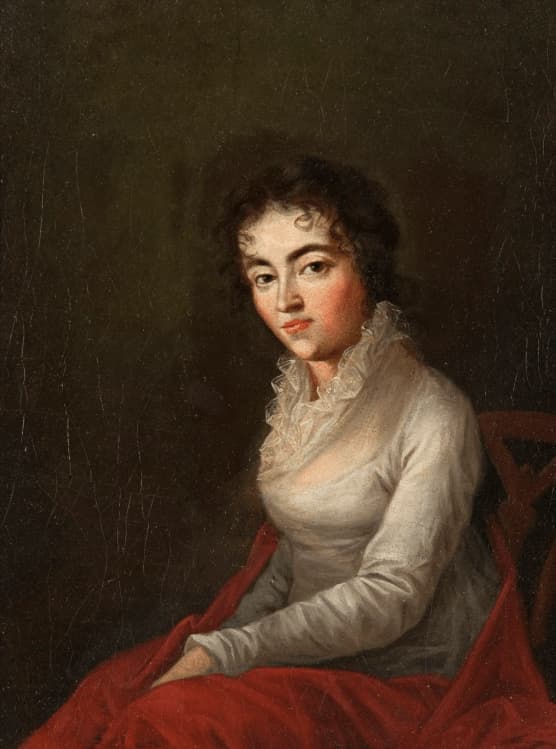
Constanze Mozart as portrayed in 1782 by her brother-in-law Joseph Lange © Wikipedia
Constanze, like her sister Aloysia, was born in the town of Zell im Wiesental in 1762.
When she was fifteen, she met Mozart for the first time when he came to teach her sister Aloysia and fell in love with her.
After Aloysia got a singing job in Vienna, the entire Weber family moved there. Their father died shortly after their arrival, and so to make ends meet, the Weber women opened their home to boarders.
As chance would have it, Mozart had just moved to Vienna and was looking for lodgings. He moved in and soon fell in love with 19-year-old Constanze.
The two had a rocky courtship, and their parents weren’t thrilled with the match, but the two eventually married in 1782. They had six children together, although only two survived past infancy.
Mozart died in 1791, leaving Constanze an economically vulnerable widow not yet thirty with two young children. She worked tirelessly to preserve her husband’s legacy and reaped the financial rewards.
In 1797, she met a Danish diplomat named Georg Nikolaus von Nissen. They lived together for years before finally marrying in 1809. They partnered together on a biography of Wolfgang, which she published in 1828, two years after his death.
Constanze’s savvy promotion of her late husband’s work, plus his heartfelt genius, led to his entering the canon and ultimately to her becoming a wealthy woman.
Constanze eventually moved to Salzburg to live with her sisters. She died in 1842.
Mozart: Ave verum
Maria Anna Thekla Mozart
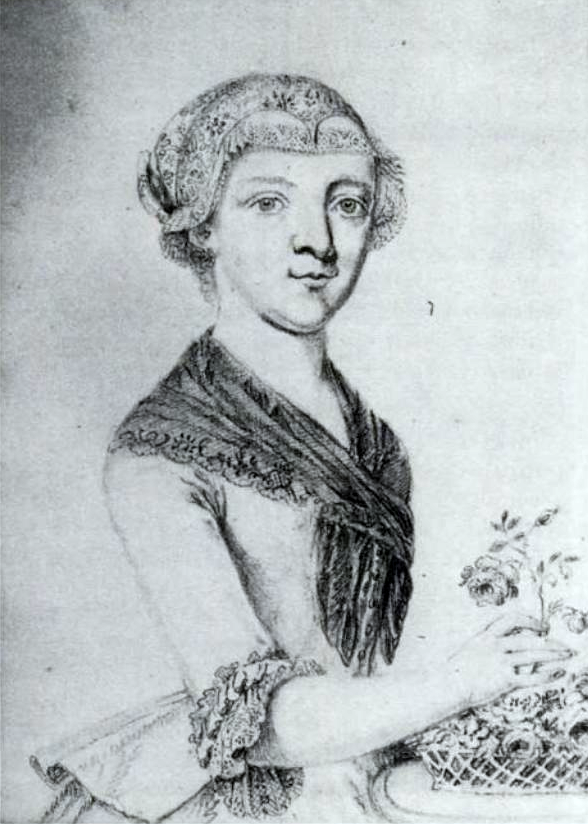
Maria Anna Thekla Mozart
Maria Anna Thekla Mozart was born in 1758 in Augsburg, Germany. She was the daughter of Leopold Mozart’s brother, Franz Alois Mozart, and was known as Marianne.
In 1777, when Wolfgang and Marianne were twenty-one and nineteen, respectively, they met in Augsburg.
They got along well and had the same dirty, scatological sense of humour. Ten letters from Wolfgang to Marianne survive, and they’re full of all kinds of dirty jokes. These are known as the “Bäsle letters” (little cousin letters). They’ve scandalised many readers over the generations; Margaret Thatcher, for instance, refused to believe Mozart could ever write such earthy things.
In 1778, Wolfgang sent her a portrait of himself, a possible indication that the two were romantically interested in one another. She stayed with him and the family in Salzburg for two months in 1779.
They met again in Augsburg in 1781, but that was the year that Wolfgang started dating Constanze Weber, and any interest he might have had in Bäsle had waned. After the 1781 meeting, Marianne and Wolfgang never saw each other again.
She had an illegitimate daughter in 1784. Luckily, the father provided economically for her and her daughter.
In 1814, she moved with her daughter to Bayreuth, Germany. She died in 1841. After her death, the portrait that Wolfgang had sent her was discovered among her possessions: a sign, perhaps, that she had never totally forgotten her famous cousin.
For more of the best in classical music, sign up for our E-Newsletter




Hi Emily, I’ve written and published a play about Mozart that features Constanze, Aloysia, Sophie and Nannerl, among others in his life. If interested, happy to send you the script and/or the link on Amazon to the play called All The Scattered Pages. Would love to get your take on it. Thanks.
Jared